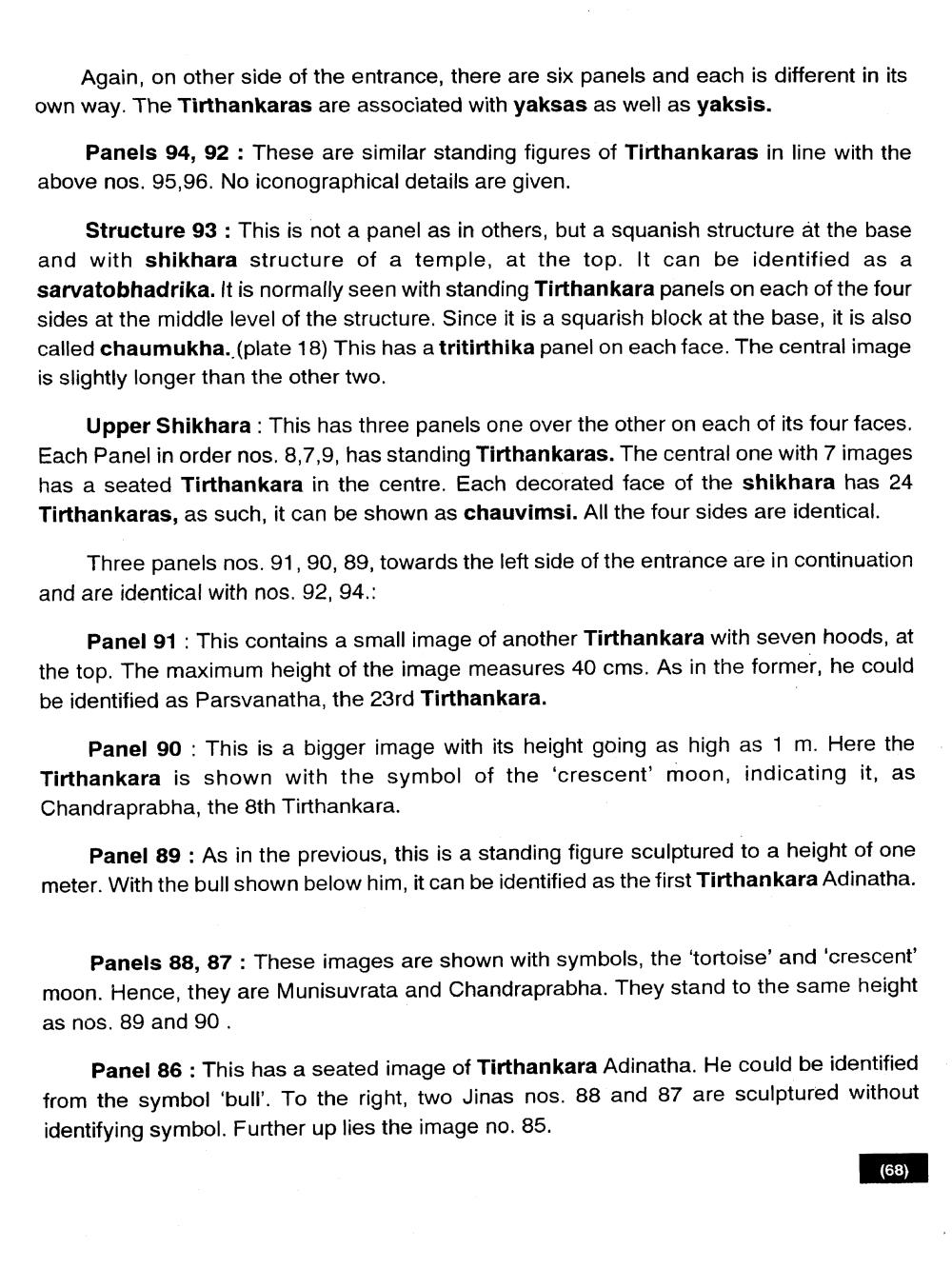________________
Again, on other side of the entrance, there are six panels and each is different in its own way. The Tirthankaras are associated with yaksas as well as yaksis.
Panels 94, 92 : These are similar standing figures of Tirthankaras in line with the above nos. 95,96. No iconographical details are given.
Structure 93 : This is not a panel as in others, but a squanish structure at the base and with shikhara structure of a temple, at the top. It can be identified as a sarvatobhadrika. It is normally seen with standing Tirthankara panels on each of the four sides at the middle level of the structure. Since it is a squarish block at the base, it is also called chaumukha. (plate 18) This has a tritirthika panel on each face. The central image is slightly longer than the other two.
Upper Shikhara : This has three panels one over the other on each of its four faces. Each Panel in order nos. 8,7,9, has standing Tirthankaras. The central one with 7 images has a seated Tirthankara in the centre. Each decorated face of the shikhara has 24 Tirthankaras, as such, it can be shown as chauvimsi. All the four sides are identical.
Three panels nos. 91, 90, 89, towards the left side of the entrance are in continuation and are identical with nos. 92, 94.:
Panel 91 : This contains a small image of another Tirthankara with seven hoods, at the top. The maximum height of the image measures 40 cms. As in the former, he could be identified as Parsvanatha, the 23rd Tirthankara.
Panel 90 : This is a bigger image with its height going as high as 1 m. Here the Tirthankara is shown with the symbol of the 'crescent moon, indicating it, as Chandraprabha, the 8th Tirthankara.
Panel 89: As in the previous, this is a standing figure sculptured to a height of one meter. With the bull shown below him, it can be identified as the first Tirthankara Adinatha.
Panels 88, 87 : These images are shown with symbols, the 'tortoise' and 'crescent' moon. Hence, they are Munisuvrata and Chandraprabha. They stand to the same height as nos. 89 and 90.
Panel 86 : This has a seated image of Tirthankara Adinatha. He could be identified from the symbol 'bull'. To the right, two Jinas nos. 88 and 87 are sculptured without identifying symbol. Further up lies the image no. 85.
(68)




